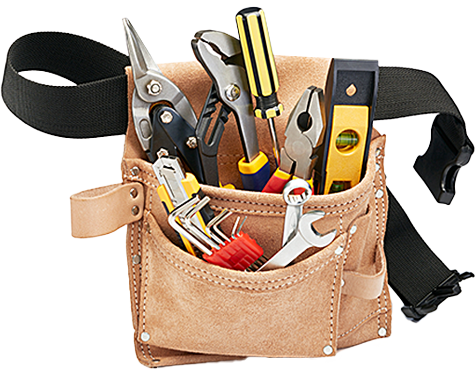
Ah, yes. The toilet. Miracle of modern hygiene. Ever-present comfort. Loo. Lavatory. WC. Benchmark of civilization. Foil of modern homeowners. Friend of modern plumbers.
Toilets have been around for thousands of years in one capacity or another. The commode as we know it today, however, wasn’t commonplace until after the turn of the 20th century. Because toilets are so common, it’s easy to forget how impressive their water-handling engineering is. Unless you’re us, that is. That’s why we’ve detailed the entire process from start to finish for you below.
The Parts of a Toilet
First things first, we need to list all the parts that make a toilet work. A toilet’s main function relies on three elements: the bowl siphon, the flushing mechanism, and the refill mechanism.
The Bowl Siphon
The Bowl Siphon is made up of the rim, the bowl, and the siphon. This part of the toilet has no moving parts but can function on its own. By simply pouring a bucket of water into your toilet bowl, you can “flush” it. Toilet bowls are usually made from porcelain.

The Flushing Mechanism
The flushing mechanism is inside your toilet’s tank. The flush handle outside the tank is attached to a chain inside. When you push the handle to flush, you’re actually pulling the chain. Pulling the chain lifts the flush valve or flapper it’s connected to. This opens the drain hole in the bottom of the tank and allows the tank water to quickly enter the toilet bowl.
The rapid introduction of water from the tank through jets in the bowl’s rim creates suction in the bowl in the form of the flush. That suction pulls out whatever’s inside the bowl down into your pipes.
The Refill Mechanism
The refill mechanism is a valve that’s responsible for turning the water supply on and off. This mechanism senses where a device called a float or float ball sits inside the tank. The float, well, floats in the tank’s water.
When the water’s low, the float is low. The refill mechanism senses that the float is low and opens, adding water to the tank. As water enters the tank, the float rises along with it.
When the float reaches the desired fill level, the refill mechanism closes again. The refill mechanism also includes an overflow tube, which dumps excess water into the bowl should the float malfunction.
How a Toilet Works
While describing the individual parts of a toilet, we’ve given you a basic idea of how a toilet does its crucial job. Let’s bring it all together here with a step-by-step walkthrough of what happens when you flush the toilet.

- You go to the bathroom. When you’re done, you push on the handle, which pulls the chain.
- Pulling the chain releases the flush valve. The flush valve releases approximately 1.5 to 3 gallons of water from the tank into the bowl.
- The speed and motion of the water rushing into the bowl creates a siphoning effect. That siphon sucks everything in the bowl down into the drain.
- As water leaves the toilet tank, the water level falls and the float sinks with it.
- The flush valve reseals itself so that new water can’t leave the tank.
- When the float sinks, it activates the refill valve. The refill valve opens, and clean water fills the toilet tank.
- When the float rises back up to a certain level, it triggers the refill valve to close again.
- If the float malfunctions and the refill valve doesn’t close, the overflow tube redirects the water to prevent flooding.
Cool, huh? Toilet engineering has been refined over the decades to give you a simple solution to a basic biological need. Taking good care of your toilet will make sure it’s always working as intended.
How to Keep Your Dallas Toilet Working
Invest in regular drain cleanings to keep your toilet doing exactly what was described here. If things do go wrong – if you have a clog, a weak flush or a running toilet – there’s Benjamin Franklin Plumbing.




